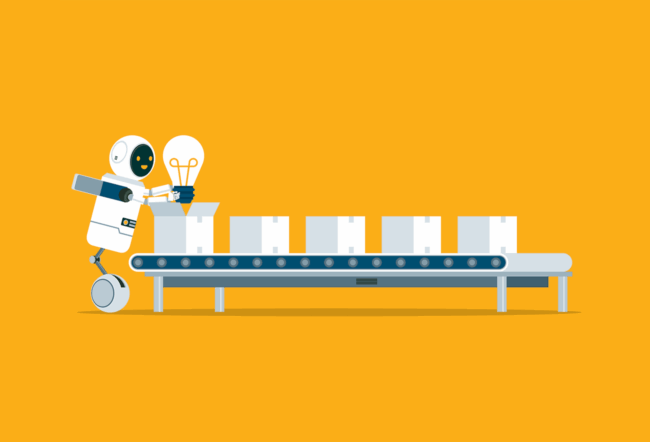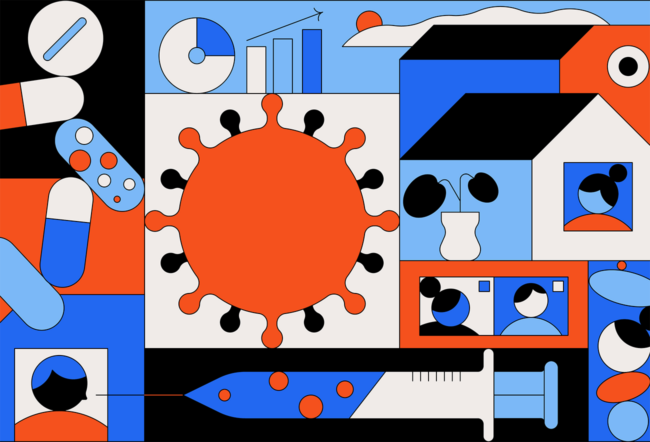Digital innovation is giving rise to new business models. Uber and Airbnb are household names today, when not so long ago we were all learning about the sharing economy. The regulations don’t always evolve as quickly as technological change — at least that’s the perception. So what should policy makers and regulators do? Wharton legal studies and business ethics professor Kevin Werbach, who wrote a policy brief about the topic for the Penn Wharton Public Policy Initiative, recently shared his insights into that question with Knowledge at Wharton.
An edited transcript of the conversation appears below.
Knowledge at Wharton: In your article, you mentioned something called the Internet of the World. Can you tell us what that is?
Kevin Werbach: There’s something big going on, and it’s a bigger trend than most people realize. There are three trends, and each in and of themselves is significant. One is what we often call the sharing economy — it’s really more the on-demand economy. It’s not just about sharing resources, but services like you mentioned, Uber and Airbnb, which give on-demand access to resources. The second piece is the Internet of Things — all kinds of devices, billions of devices getting networked. And the third is big data and analytics — the ability to understand and manipulate trends coming out of all those devices.
What those three things together mean is that all of the world, potentially, is networked. It’s not just that you go somewhere to a computer or you go to your phone to get access to information. It’s that potentially everything is a generator of data, and all that data can be integrated and analyzed and processed and manipulated. What that means is the kinds of trends and the kinds of developments that we saw online are now happening offline. They’re happening to things and physical objects in the world, as well.
Knowledge at Wharton: You point out that the scale of on-demand services is potentially much greater than the legacy industries they challenge. How so?
Werbach: There’s this kind of cheap talk about new technologies disrupting old technologies. And actually, the theory of disruptive innovation — which goes back to Clayton Christensen and Harvard Business School — is a serious academic theory, but far too often people in business and entrepreneurship and in the media use the word “disruption” as just kind of a synonym for new technology. And the reality is, it’s not that you have one market, and suddenly a bunch of new companies come in a replace that market.
“I’m arguing for an openness and a recognition that ‘regulation’ isn’t a dirty word.”
Often what happens — and this is what we’re seeing with things like the on-demand economy — is that the new markets are different. So it’s not that Uber takes the taxi market and every taxi gets replaced by an Uber driver. In fact, Uber has put out some numbers for the past several years that show that the scale of the market they’re tapping into is actually much bigger.
What that means is, [the existence of on-demand services firms] is not just a competitive threat — and certainly it is a competitive threat to the incumbent industries — but it’s creating something new. It’s unlocking latent demand that the previous approaches didn’t reach.
Knowledge at Wharton: You also pointed out that throughout the different technological waves since the 1990s — we went through ecommerce, social media, now mobile– regulations have always been seen as an enemy of innovation. But you say that this digital dichotomy is actually misunderstood. Can you explain that?
Werbach: There’s two pieces to it. One is the term that you referenced that I use in the paper — the digital dichotomy. That is a misunderstanding that the online world is inherently different from the offline world. The reason that’s not true is what I said at the beginning. Increasingly, there is no difference, even if you’re using a physical thing.
So take the Uber example — and it’s such a perfect example. [It’s] a physical person driving a physical car, but from your standpoint running the app and pushing a button and saying, “Make a car appear” — it’s as though that’s something that’s in cyberspace. It’s as though it’s something digital. It’s an extension of the software infrastructure of Uber, even though it’s a physical thing, a physical person driving a physical car.
We tend to assume that there is one set of rules for the real world, and there’s one set of rules for the digital world, and that’s a mistake because, increasingly, there is just the world. Software technology, networks, all these trends, and what I call the Internet of the World are affecting everything. So that’s the first piece: the assumption that we can just ignore the rules of the physical world because we need totally new rules for the digital world.
The larger issue, though, is this question of innovation and regulation. And again, there’s this common assumption that innovation needs to thrive with no regulation, and any time government gets involved, that’s a check and a drain and a block on innovation — and that’s not really the case.
What I talk about in the article you referenced and the larger law review article it’s based on, is that if you go and look at the history of how the internet developed, how electronic commerce developed in the 1990s, a surprising amount of the time it was government action actually facilitating innovation, and the emerging startups actually pushing for that government intervention to help create a more innovative marketplace.
Knowledge at Wharton: That’s an interesting point, and in your article you also pointed to one challenge for regulators, and that is a lot of these new startups don’t really fit neatly into industry categories. The example you use is Uber versus Skype. Can you go through that example?
Werbach: I should be clear. It’s not that regulators always get it right. They make mistakes, and they have lots of flaws and lots of reasons why they act in a certain way, and we should definitely criticize bad regulations. But we just shouldn’t assume necessarily that they are bad, and necessarily what startups do is good.
The Skype and Uber comparison is basically that both of them were companies that when they started were illegal in most jurisdictions. Skype — the very popular internet communications service, originally voice calling, now also video and messaging and so forth, [and] now owned by Microsoft — was illegal in most of the world when it launched, because there were rules saying you could not do a communications service, a telephone service, outside of the existing regulatory infrastructure.
In the U.S., because of what we did — I was at the Federal Communications Commission in the 1990s, when we had to think about voice over IP (Internet Protocol) — we very deliberately left open the door. Even though things like Skype were outside of the regulatory structure, we made a conscious decision to allow them to develop. And that’s an example of regulators consciously deciding not to impose a whole set of rules early on — when these were nascent technologies — allowing them to grow.
Uber is similar. Uber is illegal in most of the cities where it operates. And the story of Skype, I think, is a hopeful story. What happened with Skype is that first of all, you had regulators like the FCC in the U.S. that understood these new internet calling technologies were … a way to lower prices and create better service, and [provide] new services and innovation, and so that we shouldn’t rush to impose all the traditional rules on them. And as these companies grew, they were able to work with regulators to address the rules that were necessary.
Knowledge at Wharton: You believe that government can actually be a positive force in innovative markets. Can you give us more examples of that?
Werbach: We saw a lot of examples with the growth of the internet and electronic commerce, starting 20 years ago. One of them was the antitrust case against Microsoft. Microsoft was the dominant company in the personal computer [market] and in the operating system market, and lots of start-up companies — like Netscape — realized they wanted to innovate, they wanted to build the internet economy as we know it today. You couldn’t have Microsoft standing there, using its power at the time.
It’s hard to realize today, with what’s happened — the growth of Apple and the growth of smartphones and so forth — just how much power Microsoft had as a bottleneck. Microsoft controlled access to the PC, and the PC was the only game in town. Had it not been for that action by the government — filing that antitrust case — Microsoft may have been able to warp or slow down the growth of the open internet economy. And it turned out most of the startups were on the side of the government in the case.
“What stops the algorithm from colluding with someone else’s algorithm behind the scenes to fix prices?”
[More recent cases include] the fight over network neutrality rules, where lots of startup companies went to the Federal Communications Commission and said, “We don’t want broadband providers — the access providers, the internet service providers or ISPs as they’re called — to stop us from getting into the market, or to basically tax us, and say, ‘you can only get to customers if you pay us this special fee.’” They were actually urging government to act in order to create a more open market.
Knowledge at Wharton: You also say that on-demand services would bring what you call algorithmic competition policy questions to the fore. Why is this important?
Werbach: Competition policy — I gave the example of Microsoft — is tremendously important to the digital economy. The Microsoft case was an example where there was a new kind of business model. Microsoft was one of the first to build this platform, network-based business model where Windows benefitted from all the applications on top of Windows, but Windows would always want to ensure that none of those applications would then compete with it. And there were tremendous benefits of that model. You know, Microsoft did great things for innovation, but the Microsoft case put a spotlight on some of the dangers and the downsides.
What we’re seeing now with these next-generation platforms, these on-demand platforms, is a new twist on that model. Companies like Uber and Airbnb are built on algorithms. They’re built on software that understands supply and demand and matches people on both sides of the network. And again, that’s a tremendous boon for competition and innovation. I’m not saying it’s bad, by any means, but it does put the platform owner in a position of unimaginable control.
How do you know that what you are paying for that Uber ride is the efficient price? Uber says, “Well, by definition, it’s what the algorithm gives you.” Well, but who controls the algorithm? And what stops the algorithm from colluding with someone else’s algorithm behind the scenes to fix prices?
Again, we have antitrust doctrines about things like price-fixing, but those are based on people in a smoke-filled room saying, “Okay, you’re going to charge this, and I’m going to charge that.” … Now it’s all happening silently, through software. And so I think this one of the great competition policy challenges of our age is how to prevent those kinds of mechanisms from raising costs and raising prices and hurting consumers, while still allowing flexibility for companies to innovate and do things that, most of the time, actually wind up helping consumers.
Knowledge at Wharton: That brings us to the point you made in your article about algorithmic cartels. How could those come about?
Werbach: The algorithms could talk to other algorithms — and we see this already. You look at pricing on Amazon.com. Amazon has this platform that allows anyone else to [look in] Amazon.com and set their prices. A lot of companies that are sophisticated set their prices algorithmically. They might say, “Amazon is charging this price. Automatically charge 2% less than Amazon’s price.” So when [the product] comes up, they’re the cheapest price.
“You get this increasingly complex war between the algorithms, because they’re all basing their prices on each other.”
What happens is you get this increasingly complex war between the algorithms, because they’re all basing their prices on each other, and so forth. What can potentially happen is companies decide, “Well, no, let’s both agree. We’ll set a price higher, as opposed to competing in a race to the bottom, and we’ll both be better off.” But who’s worse off is consumers. So that’s a concern that we’re starting to see on platforms like Amazon, and it’s more of a concern on these digital on-demand platforms, where again, everything is in software. And we have lots of different actors coming together, and we don’t even know what the mechanism is to get access to the data to see if that’s what’s happening.
Knowledge at Wharton: How do you regulate that?
Werbach: First, you start to have a conversation where the regulators say, “Here’s what we’re trying to achieve.” And the companies say, “Here’s what we’re doing.” And you figure out what’s possible. Ultimately, as I said, there needs to be access to the data. And this is a great opportunity, because these new platforms generate tremendous amounts of data. They use the data internally to be more efficient and to provide better service, but if they could provide more transparency of that data, that would give regulators the opportunity to identify what the market performance is. This can be done in a secure way, in a way that doesn’t harm them with competitors and so forth.
It’s actually making the regulation itself more algorithmic, making the regulation itself more data-driven, which is a healthy and a good thing. And so I think this is potentially the new model we’re going to come to, but it takes the company’s willingness to work together and not to make [sweeping] statements like, “Oh, we don’t need any regulation.”
Knowledge at Wharton: You mention alternatives to direct regulation, which are self-regulation and what you call co-regulation and delegated regulation. Can you explain the differences among all those?
Werbach: These are models that actually are used much more widely elsewhere in the world, especially in Europe for things like internet content. There’s a whole variety of different models, but basically they start with the notion that companies individually and industry collectives and industry groups potentially know the most about their market, and if they’re well-meaning, they can come up with mechanisms that achieve the goals of regulators, without government having to be intrusive, or without government having to be inefficient, because regulatory agencies don’t have the data, and they’re not set up to operate in that way.
The problem is, you need some accountability. Just saying, “Let companies regulate themselves” is meaningless, because there are always incentives for companies to cheat or to game the system or basically help themselves at the expense of the public.
But there are a variety of mechanisms where, for example, government sets goals and then gives industry opportunities to meet them, report on how they’re doing, and provide transparency of the data. There are mechanisms that basically say, “All right, in the first instance, you have this opportunity to act, but if you don’t act in a way that we find appropriate, then we’re going to intervene.”
“Nascent, small innovators should have lots of running room, because even a good rule will kill them off.”
Again, there’s different variations on these mechanisms, but [overall] it’s an approach that says instead of everything starting with the regulator — the regulator says yes or no before anything happens in the marketplace — companies can come into the marketplace, especially new companies.
Nascent, small innovators should have lots of running room, because even a good rule will kill them off when they’re too small.… I’m arguing for an openness and a recognition that ‘regulation’ isn’t a dirty word.
Knowledge at Wharton: Any final thoughts for policy makers and regulators?
Werbach: Regulators have to take action here, too. It’s not that they need to just stay where they are and expect the companies to come to them. Often, there’s lots of legacy in regulation, and some of it is regulators’ fault, and some of it is the fault of, for example, the legislatures that set up the rules. A lot of what we are seeing in these markets is the need for legislative change, for governments to change the structure of the rules, because the rules use terms that no longer make sense, or they have categories that no longer make sense.
There needs to be a lot of dialogue between industry and regulators and legislators, to say, “All right. Where are these glitches? Let’s fix them.” Regulators need to be part of that and not to just assume that the status quo is the right approach. Regulators also need to be open. They need to go to these companies and say to them, “We have shared goals here. We’re not here to put you out of business, but we care about consumers, and we trust that you do, too. So let’s come up with a solution.”
It really has to go both ways, and ultimately, this is about trust. There needs to be a mutual process of generating trust between these industries and the regulators, and in a lot of cases, that’s lacking. But I’m hopeful, and I think the examples that we saw with the growth of the internet really are a story about good work on both sides that facilitated this extraordinary explosion of innovation and wealth creation that we saw.



